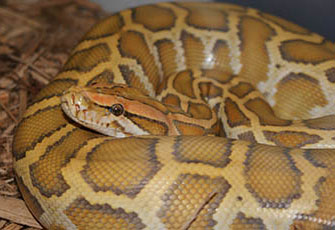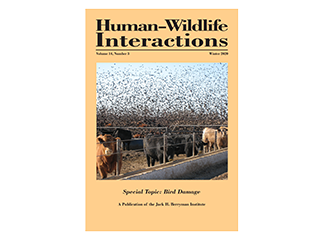Current Research
Summary of Wild Hog Research
Wild hogs are responsible for an estimated $1.5 billion to the U.S. economy each year. These losses are the result from row crop destruction (including timber), damage to property and infrastructure, and disease transmission, as well as many others. Also included in this estimate are the costs of controlling wild hogs, and in cases where applicable, eradication efforts through state and federal agencies, as well as private operations. We currently have a total of five research projects underway in regards to wild hog ecology, agricultural economics, conservation policy, and human-dimensions. One project is measuring movement patterns of wild hogs in agricultural landscapes to better understand their foraging and movement behaviors. Jointly – another project aims at measuring wild pig damage to corn production. These two projects together will quantify the economic losses as well as the spatial patterns of damage associated within and among corn fields, while also providing information regarding more efficient hog control methods.
Another project underway seeks to assess attitudes and perceptions among Mississippi residents in regards to wild hogs and their management using survey statistics and protocols. The fourth project is researching wild hog diet to better estimate damage to a variety of agricultural crops and other natural resources. And lastly, a project that is designed to evaluate - at the national level, all federal, state, and local policy and legislation regarding the wild hog invasion. Additionally, effective and ineffective policy will be evaluated to determine commonalities in social, demographic, economic, and ecological factors that may have contributed to its success or failure. This study will provide state legislators with model legislation that can be successfully passed with the support of stakeholders and the citizenry. It will also provide states without, or with low populations of hogs, a proactive suite of legislation to prevent further spread and facilitate more meaningful eradication of wild hogs.
Estimation of Deer Damage to Soybean Production in Mississippi: A Temporal and Spatial Context:
Mississippi soybean production is currently ranked 14th in the nation with over 76 million bushels produced on 2,695 farms, with a 2010 economic impact of $846 million. Mississippi's deer population is currently estimated to be ≥ 1.75 million animals, with an economic impact to Mississippi in excess of $800 million.Although both soybeans and white-tailed deer are very important to the Mississippi economy, white-tailed deer readily consume soybeans and soybean production has been linked to population dynamics of deer in Mississippi. Thus, in areas where soybean production and deer populations co-occur, there will likely always be interaction regarding deer damage to soybean crops. We propose a study to estimate the impact of white-tailed deer on soybean production in Mississippi. We approach this research with the underlying assumption that in areas where deer populations and soybean production exist, there will be crop depredation to some extent, depending on, ultimately, deer abundance.
Research publications
| Year | Publication |
|---|---|
| 2019 | Greene, R., E., R. B. Iglay, K. Evans, T. B. Wigley, D. A. Miller, 2019. Estimating capacity of managed pine forests in the southeastern U.S. to provide open pine woodland condition and gopher tortoise habitat. Forest Ecology and Management. , 432: 200-208: Download |
| 2019 | Miles, T., P., T. G. Rosser, S. A. Rush, 2019. Morphological, molecular and phylogenetic characterisation of Eimeria macyi Wheat, 1975 (Apicomplexa: Eimeriidae) in the eastern red bat Lasiurus borealis (Müller, 1776) from Mississippi, USA. Systematic Parasitology. 2, 96: 245-255: Download |
| 2018 | Conkling, T., J., J. L. Belant, T. L. DeVault, J. A. martin, 2018. Impacts of biomass production at civil airports on grassland bird conservation and aviation strike risk. Ecological Applications. 5, 28: 1168- 1181: Download |
| 2018 | Foggia, J., S. A. Rush, T. B. Wigley, D. A. Miller, J. A. Martin, 2018. Effects of forest stand structure and edge proximity on predation risk. Wilson Journal of Ornithology. 3, 42: 237-245. Mississippi State. |
| 2018 | Gantchoff, M., G. Wang, D. E. Beyer, J. Belant, 2018. Scale-dependent home range optimality for a solitary omnivore. Ecology and Evolution 8:12271-12282.: Download |
| 2018 | Gantchoff, M., G., C. M. Wilton, J. L. Belant, 2018. Factors influencing exotic species richness in Argentina's national parks. PeerJ. , 6: e5514: Download |
| 2018 | Gilliland, C., M. Colvin, S. A. Rush, S. Reagan, 2018. American alligators are predators of Paddlefish: An undocumented predator-prey linkage affecting Paddlefish population dynamics. Foodwebs. , 16: e00087: Download |
| 2018 | Hill, J., E., T. L. DeVault, J. C. Beasley, O. E. Rhodes, Jr., J. L. Belant, 2018. Effects of vulture exclusion on carrion consumption by facultative scavengers. Ecology and Evolution. 5, 8: 2518-2526: Download |
| 2018 | Iglay, R., B., K. B. Schwarz, J. L. Belant, J. A. Martin, G. Wang, T. L. DeVault, 2018. Large Mammal Use of Seminatural Grasslands and Implications for Aviation Strike Risk. Journal of Fish and Wildlife Management. 1,9:222-227: Download |
| 2018 | Iglay, R., B., R. E. Greene, B. D. Leopold, D. A. Miller, 2018. Bird conservation potential of fire and herbicide treatments in thinned pine stands. Forest Ecology and Management 409:267-275: Download |
| 2018 | Jones, P., D., B. K. Strickland, S. Demarais, G. Wang, C. M. Dacus, 2018. Nutrition and ontogeny influence weapon development in a long-lived mammal. Canadian Journal of Zoology. , 96: 955-962: |
| 2018 | McFadden-Hiller, J., E., J. L. Belant, 2018. Spatiotemporal shifts in distribution of a recolonizing black bear population. Ecosphere. 9, 9: e02375: Download |
| 2018 | Murphy, S., M., J. S. Laufenberg, J. D. Clark, M. Davidson, J. L. Belant, D. L. Garshelis, 2018. Genetic diversity, effective population size, and structure among black bear populations in the Lower Mississippi Alluvial Valley, USA. Conservation Genetics. 5, 19: 1055-1067: |
| 2018 | Norton, D., C., J. L. Belant, J. G. Bruggink, D. E. Beyer, Jr., N. J. Svoboda, T. R. Petroelje, 2018. Female American black bears do not alter space use or movements to reduce infanticide risk. PlosOne. 9, 13: e0203651: Download |
| 2018 | Paolini, K., E., B. K. Strickland, J. L. Tegt, K. C. VerCauteren, G. M. Street, 2018. Seasonal variation in preference dictates space use in an invasive generalist. PLoS ONE. , 13: e0199078: |
| 2018 | Samiappan, S., J. Czarnecki, H. Foster, B. K. Strickland, J. L. Tegt, R. J. Moorhead, 2018. Quantifying Damage from Wild Pigs with Small Unmanned Aerial Systems. Wildlife Society Bulletin. 2, 42: 6: 10.1002/wsb.868 |
| 2018 | Scharft, A., K., J. L. Belant, D. E. Beyer, Jr, M. Wikelski, K. Safi, 2018. Habitat suitability does not capture the essence of animal-defined corridors. Movement Ecology. 18, 6: |
| 2018 | Street, G., M., T. Avgar, L. Bürger, 2018. Net displacement and temporal scaling: model fitting, interpretation, and implementation. Methods in Ecology & Evolution. , 9: 1503-1517: |
| 2018 | Wang, G., 2018. Bayesian spatiotemporal dynamic models for regional dynamics of avian populations. Ecological Informatics. , 45: 31-37: |
| 2018 | Wang, G., 2018. Machine learning for inferring animal behavior from location and movement data. Ecological Informatics. , 49: 69-76: |
| 2018 | X., G. Wang, 2018. Spatiotemporal dynamics of mesocarnivore populations. Wildlife Biology. No wlb.00429, 2018: 1-7: 10.2981/wlb.00429 |
| 2017 | Francis, R., J. D. Taylor, E. D. Dibble, B. K. Strickland, V. M. Vetro, C. Easterwood, G. Wang, 2017. Restricted cross-scale habitat selection by American beaver in winter and spring. Current Zoology. , 63: 703-710. Oxford University Press. |
| 2017 | Hannah, T., J. M. Tirpak, G. Wathan, Z. G. Loman, D. L. Evans, S. A. Rush, 2017. Influence of landscape- and stand-scale factors on avian communities to aid in open pine restoration. Forest Ecvology and Management. 15, 384: 389-399: Download |
| 2017 | Hinton, G., C., B. K. Strickland, S. Demarais, T. W. Eubank, P. D. Jones, 2017. Estimation of deer damage to soybean production in eastern Mississippi: perception versus reality. Wildlife Society Bulletin. No, 10.1002/wsb.738: 10.1002/wsb.738 |
| 2017 | Iglay, R., B., B. N. Buckingham, T. W. Seamans, J. A. Martin, B. F. Blackwell, J. L. Belant, T. L. DeVault, 2017. Bird use of grain fields and implications for habitat management at airports. Agriculture, Ecosystems and Environment. No, 242: 34-42: |
| 2017 | Jiang, G., G. Wang, M. Holyoak, Q. Yu, X. Jia, Y. Guan, H. Bao, Y. Hua, M. Zhang, J. Ma, 2017. Land sharing and land sparing reveal social and ecological synergy in big cat conservation. Biological Conservation. , 211: 142-149: |
| 2017 | King, D., T., G. Wang, Z. Yang, J. W. Fischer, 2017. Advances and environmental conditions of spring migration phenology of American White Pelicans. Scientific Reports. , 7: 40339: |
| 2017 | Kittle, A., M., M. Anderson, T. Avgar, J. A. Baker, G. S. Brown, J. Hagens, E. Iwachewski, S. Moffatt, A. Mosser, B. R. Patterson, D. E.B. Reid, A. R. Rodgers, J. Shuter, G. M. Street, I. D. Thompson, L. M. Vander Vennen, J. M. Fryxell, 2017. Landscape-level wolf space use is correlated with prey abundance, ease of mobility, and the distribution of prey habitat. Ecosphere. , 8: e01783: |
| 2017 | Street, G., M., A. R. Rodgers, T. Avgar, L. M. Vander Vennen, J. M. Fryxell, 2017. Comparing resource selection and demographic models for predicting animal density. Journal of Wildlife Management. 1, 81: 16-25: |
| 2017 | Woodyard, E., T., S. A. Rush, T. G. Rosser, 2017. Alligator wrestling: Morphological, molecular, and phylogenetic data on Odhneriotrema incommodum (Leidy, 1856) (Digenea: Clinostomidae) from Alligator mississippiensis Daudin, 1801 in Mississippi, USA. Parasitology Research. , 116: 2981-2993: |
| 2016 | Guangshun Jiang, Jinzhe Qi, Guiming Wang, Quanhua Shi, Yury Darman, Mark Hebblewhite, Dale Miquelle, Zhilin Li, Xue Zhang, Jiayin Gu, Youde Chang, Minghai Zhang, and Jianzhang Ma. 2015. New hope for the survival of the Amur leopard in China. Scientific Reports 5: 15475. |
| 2016 | King, D.T., J.W. Fischer, W. David Walter, G. Wang, B.K. Strickland. In Press. Winter and summer home ranges of American White Pelicans captured at loafing sites in the southeastern United States. Waterbirds. |
| 2016 | Lafferty, D.J.R., K.C. Hanson-dorr, A.M. Prisock, B.S. Dorr. 2016. Biotic and abiotic impacts of Double-crested cormorant breeding colonies on forested islands in the southeastern United States. Forest Ecology and Management 369:10-19. Download |
| 2016 | Wan, X., L. Liu, G.M. Wang, and Y. Guo. 2016. Litter sizes of Daurian ground squirrels peak at intermediate body sizes. Mammalian Biology 81: 61-65. |
| 2015 | Ayers, C.S., K.C. Hanson-Dorr, S. O'Dell, C.D. Lovell, M.L. Jones, J.R. Suckow, B.S. Dorr. 2015. Impacts of colonial waterbirds on vegetation and potential restoration of island habitats. Restoration Ecology 23(3):252-260. Download |
| 2015 | Chen, L., G.M. Wang, X. Wan, and W. Liu. 2015. Complex and nonlinear effects of weather and density on the demography of small herbivorous mammals. Basic and Applied Ecology 16: 172-179. |
| 2015 | Guoliang Li, Baofa Yin, Xinrong Wan, Wanhong Wei, Guiming Wang, Charles J. Krebs, and Zhibin Zhang. 2015. Successive sheep grazing reduces population density of Brandt's voles in steppe grassland by altering food resources: a large manipulative experiment. Oecologia 180: 149-159. |
| 2015 | Qi, Jinzhe, Quanhua Shi , G.M. Wang, Zhilin Li, Quan Sun, Yan Hua, and Guangshun Jiang. 2015. Spatial distribution drivers of Amur leopard density in northeast China. Biological Conservation 191: 268-275. |
| 2015 | Wang, G.M. 2015. Effects of dry weather and land cover on horse West Nile Virus infection risks in Mississippi, USA. Geospatial Health 10(2):357. |
| 2014 | Biondi, K.M., J.L. Belant, T.L. DeVault, J.A. Martin, G. Wang. 2014. Integrating mammalian hazards with management at U.S. civil airports: a case study. Human-Wildlife Interactions 8:31-38. Download |
| 2014 | Dorr, B.S., K.C. Hanson-Dorr, T.L. DeVault, A. Guillaumet, S.C. Barras. 2014. Geographic segregation and evidence of density-dependent changes in sex ratios in an abundant colonial waterbird. Integrative Zoology 9:570-582. Download |
| 2014 | Drey, K.M., J.A. Martin, J.L. Belant, T.L. DeVault, B.F. Blackwell. 2014. Interactions between wildlife and civil aircraft in Mississippi. Southeastern Naturalist 13:156-165. Download |
| 2014 | Guillaumet, A., B.S. Dorr, G. Wang, T.J. Doyle. 2014. Population dynamics of the double-crested cormorants in the Great Lakes area: The cumulative effects of management. Ibis 156: 141-152. Download |
| 2014 | Petroelje, T., J.L. Belant, D.E. Beyer, G. Wang, B.D. Leopold. 2014. Population-level response of coyotes to a pulsed resource event. Population Ecology 56:349-358. Download |
| 2014 | Waller, B.W., J.L. Belant, B.D. Leopold, B.W. Young, S.L. Simek, D.L. Evans. 2014. Influence of landscape attributes on American black bear den-site selection in Mississippi. Mammal Study 39:115-119. Download |
| 2013 | King, D.T., B.K. Strickland, A. Radomski. 2013. Migration patterns of double-crested cormorants wintering in the southeastern United States. Waterbirds 35(sp1):132-137. Download |
| 2013 | King, D.T., B.K. Strickland, A. Radomski. 2013. Winter and summer home ranges and core use areas of double-crested cormorants captured near aquaculture facilities in the Southeastern United States. Waterbirds 35(sp1):124-131. Download |
| 2013 | Martin, J.A., J.L. Belant, T.L. DeVault. 2013. Bird harassment, repellent, and deterrent techniques for use on and near airports. Human-Wildlife Conflicts Monograph 2:1-48. |
| 2012 | DeVault, T.L., J.L. Belant, B.F. Blackwell, J.A. Martin, J.A. Schmidt, and L.W. Burger, Jr. 2012. Airports offer unrealized potential for alternative energy production. Environmental Management 49:517-522. |
| 2012 | Dorr, B., L.W. Burger, S.C. Barras, K. Godwin. 2012. Economic impact of double-crested cormorant (Phalacrocorax auritus) eepredation on channel catfish (Ictalurus punctatus) aquaculture in Mississippi, USA. Journal of World Aquaculture Society 43:502-513. Download |
| 2012 | Dorr, B.S., L.W. Burger Jr., S.C. Barras. 2012. Double-crested cormorant distribution on catfish aquaculture in the Yazoo River Basin of Mississippi. Wildlife Society Bulletin 36:1-8. Download |
| 2012 | Guillaumet, A. B. Dorr, G. Wang. 2012. Towards optimized population control efficiency in space and time: A modelling framework adapted to a colonial waterbird. Ecological Modelling 235-236: 95-101. Download |
| 2012 | Libal, N.S., J.L. Belant, R. Maraj, B.D. Leopold, G. Wang, S. Marshall. 2012. Microscale den-site selection of grizzly bears in southwestern Yukon. Ursus 23:226-230. Download |
| 2011 | Belant, J.L., S.L. Simek, and B.C. West. 2011. Managing black bear-human conflicts. Human-Wildlife Interactions Monograph. 1:1-77. |
| 2011 | Guillaumet, A., B. Dorr, G. Wang, J. Taylor, R. Chipman, H. Scherr, J. Bowman, K. Abraham, T. Doyle, E. Cranker. 2011. Determinants of local and migratory movements of Great Lakes double-crested cormorants. Behavioral Ecology 22: 1096-1103. Download |
| 2011 | Strickland, B., B. S. Dorr, F. Pogmore, G. Nohrenberg, S.C. Barras, J.E. McConnell, J. Gobeille. 2011. Effects of management on double-crested Cormorant nesting colony fidelity. Journal of Wildlife Management 75(5):1012-1021. Download |



